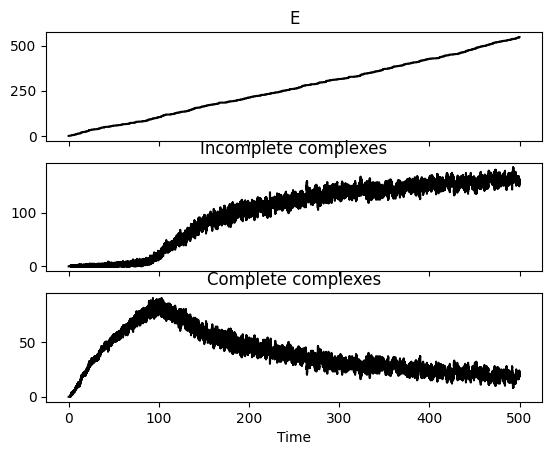The prozone effect#
The prozone effect, also called the hook effect, refers to when the abundance of a molecular complex first increases then decreases as the relative concentration of a constituent molecule E increases. In this example, we will say that a complex is composed of an L molecule, an M molecule, and an E molecule, which connects the former two together.
[2]:
from pykappa.system import System
system = System.from_ka(
"""
%init: 100 L(e[.])
%init: 100 M(e[.])
%obs: 'E' |E()|
%obs: 'Incomplete complexes' |E(l[_], m[.])| + |E(l[.], m[_])|
%obs: 'Complete complexes' |E(l[_], m[_])|
E(l[.]), L(e[.]) <-> E(l[1]), L(e[1]) @ 1, 1 // Bind L to E
E(m[.]), M(e[.]) <-> E(m[1]), M(e[1]) @ 1, 1 // Bind M to E
. -> E(l[.], m[.]) @ 1 // Inflow of E
"""
)
We’ve set up the system so that there’s no E to start but that it flows in at a constant stochastic rate. Let’s now simulate while tracking the corresponding number of complexes:
[3]:
while system.time < 5 * 10 ** 2:
system.update()
system.monitor.plot();

As we introduce more E, at first more complexes can be formed but eventually there are so many E that the other components of the complex become more likely to bind separate E molecules. The result is that the full complex is less likely to form.